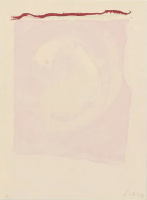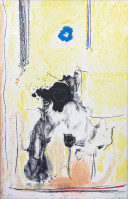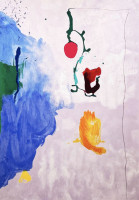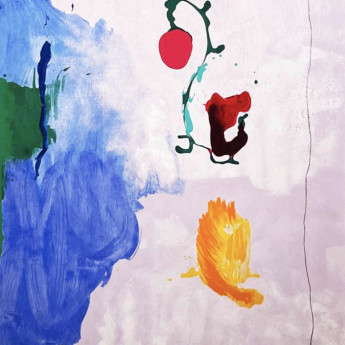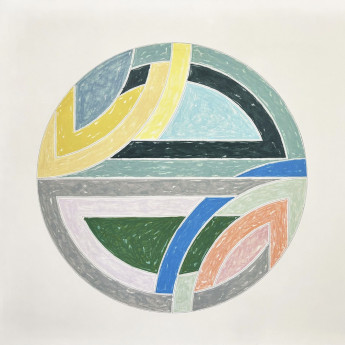
Details
Artist
Styles
Etching, aquatint, and drypoint in colors on Magnani paper - Hand-signed by artist // Helen Frankenthaler's Broome Street at Night (1987) showcases her signature abstract expressionist approach through the use of etching, aquatint, and drypoint on Magnani paper. The print features dark, moody tones, evoking the depth and quietude of nighttime. Streaks of vibrant green contrast against the deep black and brown hues, while a bold blue circular form hovers, suggesting a mysterious and celestial element. The work captures the atmospheric essence of an urban landscape, rendered in Frankenthaler’s fluid and gestural style, blending abstraction with a hint of narrative.
Broome Street at Night, 1987
form
Medium
Size
99.4 x 99.4 cm
- Inches
- Centimeters
Edition
Price
Details
Artist
Styles
Etching, aquatint, and drypoint in colors on Magnani paper - Hand-signed by artist // Helen Frankenthaler's Broome Street at Night (1987) showcases her signature abstract expressionist approach through the use of etching, aquatint, and drypoint on Magnani paper. The print features dark, moody tones, evoking the depth and quietude of nighttime. Streaks of vibrant green contrast against the deep black and brown hues, while a bold blue circular form hovers, suggesting a mysterious and celestial element. The work captures the atmospheric essence of an urban landscape, rendered in Frankenthaler’s fluid and gestural style, blending abstraction with a hint of narrative.
- Recently Added
- Price (low-high )
- Price (high-low )
- Year (low-high )
- Year (high-low )
Helen Frankenthaler
Untitled (What Red Lines Can Do), 1970
Limited Edition Print
Serigraph
USD 6,700
Helen Frankenthaler
Pompeii Forte, 1976-82
Limited Edition Print
Etching And Aquatint
Inquire For Price
Helen Frankenthaler
Valentine For Mr. Wonderful (book), 1995
Limited Edition Print
Intaglio
USD 15,700
What is abstract art?
Abstract art uses form, shape, line, and color to create a visual experience without attempting to represent external reality. The composition exists independently of the world's visual references, focusing on expressing ideas and emotions through non-representational means.





